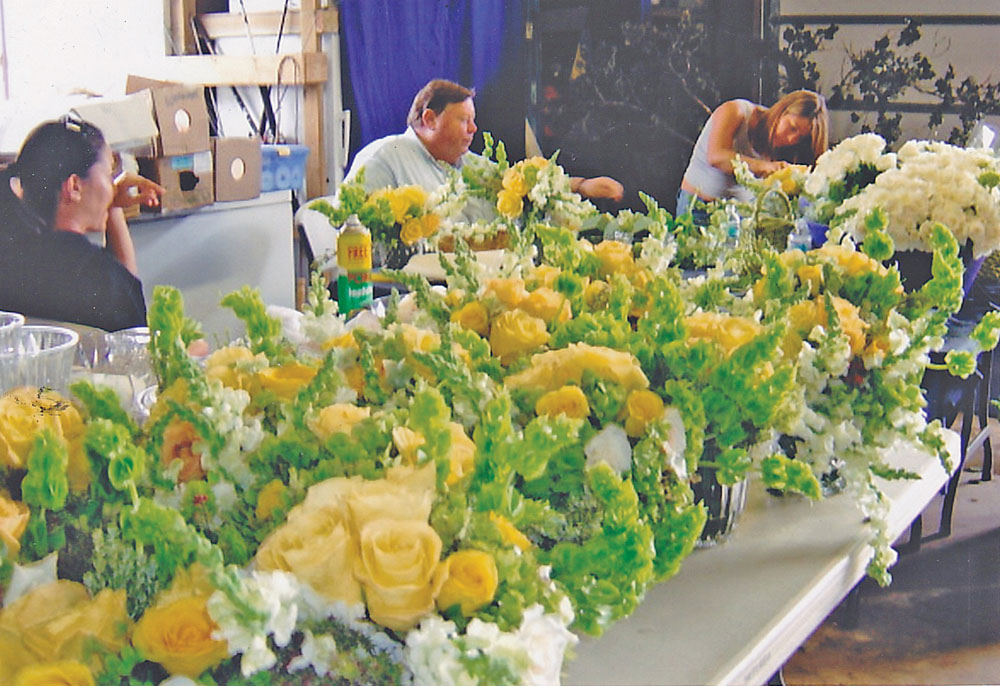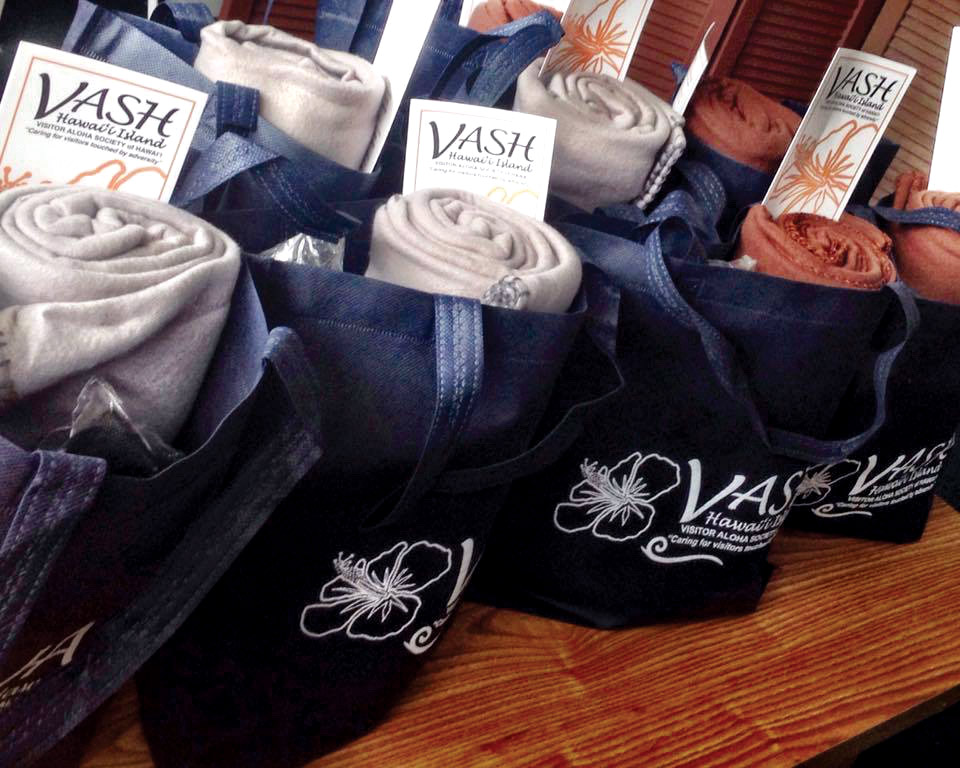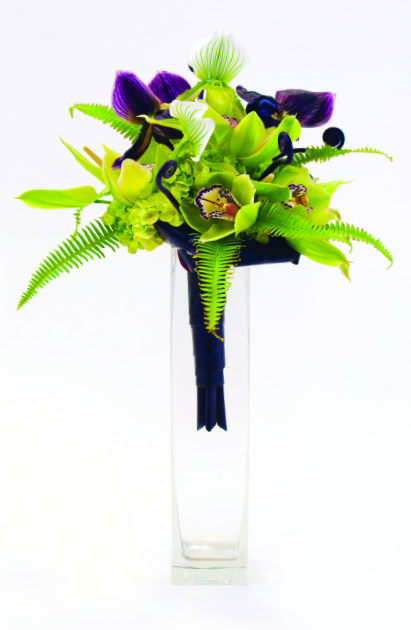
Flower Power!
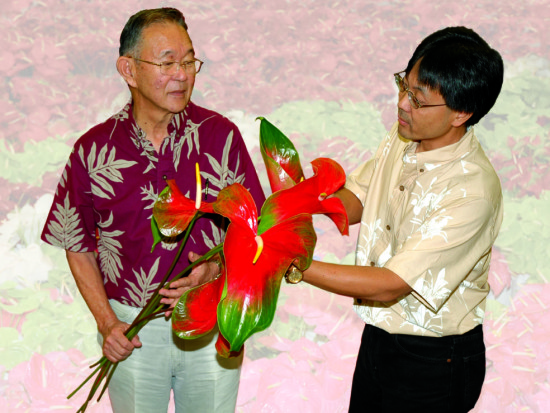
By Fern Gavelek
It all started more than a half century ago. The late Harold Tanouye Jr. was a college student in Iowa. In those days, Hawai‘i students attending mainland colleges stayed off island for the duration of their studies.
In a 2009 interview, Harold recalled, “I would visit with classmates over the holidays and so my mother sent along a box of anthuriums as a hostess gift. People raved about them; they couldn’t believe how long the flowers stayed fresh. They had never seen anything like it.”
Little did Harold know that personally experiencing the “wow factor” of anthuriums eventually paved the way for his occupation and path as both a pioneer and visionary for the state’s floriculture industry.
Putting Hawai‘i’s flowers on the map
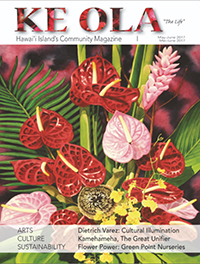
Upon returning from college, Harold searched to make his way in the world. The Hilo resident was itching to be part of the business and political movement that was touting everything Hawai‘i. It was 1964.
“I was gung ho about Hawai‘i and wanted to do something for Hilo’s economic development,” Harold said. He left his father’s tire company and eyed the business of exporting. He checked into two commodities—fruit and flowers—and found the waxy, heart-shaped anthurium flowers prime for exporting.
Harold developed 15 acres of plantings. For inventory, he went into abandoned fields and bought plants by the wheelbarrow load. In those days, floriculture was a Hawai‘i cottage industry and there were only three colors of anthuriums: red, light red and red-orange.
To create a demand, Harold headed back to the Continental US.
“I did a lot of walking,” he laughed. “I had boxes of flowers sent to my hotel and I took them with me to work on wholesalers.” Harold also stopped in at florist schools and impressed them with the exotic tropical bounty of long-lasting ti leaf, ginger and anthuriums. “They were in awe,” he remembered.
During his travels, the enterprising entrepreneur discovered wholesalers ran out of red flowers for Christmas and Valentine’s Day. Harold decided to target sales for those holidays. “I’d go visit in November so I was fresh in their minds when they needed flowers,” he detailed.
On the road, Harold met a businessman who was exporting gladiolas from Florida to Europe. In 1971, the man agreed to take 25 boxes of large, red anthuriums to Rome. The result was an industry game changer.
“I was shocked when he came back with a standing order of 2,000 dozen a week!” exclaimed Harold. “That was the biggest order anybody in Hawai‘i had ever heard of.”
Harold went to work to increase flower production and improve packaging for shipping. This began the long partnership between the nurseryman and the University of Hawai‘i at Mānoa’s College of Tropical Agriculture and Human Resources (CTAHR). With the help of the late Tadashi Higaki, a CTAHR horticulture extension agent, Harold improved plant nutrition by using a slow-release fertilizer. He switched growing mediums, going from degradable sugar bagasse to volcanic cinder. The grower also put plants in shade cloth greenhouses, relying on a workable greenhouse design by an agriculture engineer. Always the innovator, Harold devised and patented a sealed cluster packing system that housed more product while keeping it fresh longer for shipping.
Breeding Floral Beauties

Once anthuriums became a credible export, infrastructure started coming together for the industry to thrive. UH led the effort to create new anthurium varieties with different colors, shapes and desirable traits like robust root systems, strong stems and long-lasting blossoms. Harold partnered with UH’s Dr. Haruyuki Kamemoto to bring new anthuriums to market. A genetics flower breeder, Dr. Kamemoto collected anthuriums from Hawai‘i and international growers to provide germplasm for research.
Along with other local nurseries, Harold’s Green Point Nurseries served as a CTAHR Advanced Testing location to monitor the viability and market for new hybrids. One of those was UH’s large, rose-opal pink anthurium, the Marian Seefurth, which Harold claimed helped launch Green Point’s success. The cultivar was named after a UH research benefactor who loved anthuriums and often stayed at the Pink Palace, the Royal Hawaiian Hotel, in Waikīkī.
Harold’s son Eric Tanouye attributes CTAHR for helping his dad achieve his early industry successes. Through the years, Harold earned multiple awards for his foresight and innovation, including the 1988 US Senate Productivity Award and the 1992 Hawai‘i Exporter of the Year.
Since his father’s passing in 2013, Eric has been at the helm of Green Point Nurseries in Pana‘ewa and Kurtistown, which also involves sons Jon and Chris, plus a staff of over 50 employees. Like his father before him, Eric continues the partnership with CTAHR as Green Point is monitoring hundreds of test plants on any given day—a minimum of 200 each of up to 10 hybrids. The company not only provides greenhouse space and growing resources, it has a cultivating team who walks the rows of CTAHR’s plants weekly, checking on certain characteristics such as growth vigor, flower longevity and disease resistance. It takes about 10 years to create, test, patent and release a new variety.
Because of his support of UH Mānoa’s CTAHR, Eric will be awarded the prestigious Ka Lei Hano Heritage Award May 5 in Honolulu. It is one of CTAHR’s top honors and the first time the award has been bestowed to a father (in 2011) and son.
“Eric has not only been a main partner with UH, but also a key industry leader, working at the organizational level to represent floriculture and nursery as a whole,” says Kelvin Sewake, interim associate dean and associate director for CTAHR’s Extension Service. Kelvin, who served from 1989 to 2015 as a floriculture county extension agent, worked closely with both father and son concerning CTAHR’s breeding trials and other projects, such as educating farmers on effective control strategies for fighting anthurium blight.
Challenges of Hawai‘i’s Floriculture Industry
Hawai‘i’s statewide floriculture industry—comprised not only of cut and potted tropical flowers but also palms, foliage plants and landscape materials—is among the state’s top diversified agriculture industries, behind seed crops and aquaculture. In 2015, it recorded $67.4 million in sales, besting cattle, coffee and macadamia nuts according to the Hawai‘i Field Office of the USDA’s National Agricultural Statistics Service. While stats by county are no longer available, Hawai‘i Island claimed the lion’s share—more than half—of industry value in 2011.
Ten years ago, the value of Hawai‘i’s floriculture industry was nearly $109 million. “For a long time, until 2007, floriculture was Hawai‘i’s number one diversified ag product,” points out Kelvin. “Then the recession hit, the industry lost market shares and fuel prices skyrocketed. Sales are now flat and we’re hoping they will recover with the industry’s marketing efforts.”
To compete globally with cheaper foreign product that’s increasingly imported into the US, Hawai‘i’s industry focuses on providing more unique varieties of flora and a high quality product that outlasts competitors. That’s why CTAHR’s breeding efforts are so important to industry success.
Eric is excited about the new anthurium colors UH is creating, including a raspberry tone and a deep, “red dirt” (rusty) color. He says color is what helps the grower deliver the wow factor for discriminating floral designers and brides.
“UH is getting into the analogous or in-between colors,” he explains. “These new hues accent the basic colors and are our future because our industry is fashion-orientated. We need new, bright and exciting looks for our plants.”
To florists, analogous colors better connect the elements of floral design. These in-between tones can connect a red flower to an orange, and then to a yellow. They encourage the eye to transition among the primary colors. Eric likens it to sizing up a person from head-to-toe.
“When looking at someone, your eye starts at the top and goes down, then looks left to right,” he shares. “It’s the same with flowers. You want the eyes to look over the floral design and end up on the focal part of the arrangement. Color does that; it makes design art.”
Evolving Market Demand and Commodity Unification

In addition to promoting product development, Eric has been instrumental in helping the industry evolve to create a specialized market demand while unifying different flower and foliage commodities.
He helped launch the Hawai‘i Floriculture & Nursery Association (HFNA) in 2010, a statewide organization representing about 400 growers, processors and distributors of Hawai‘i nursery products. Eric says HFNA provides members with a unified voice for more clout when negotiating legislative issues and shipping rates. Currently serving as HFNA president, he says Green Point has been very dedicated in time and resources to HFNA because in the words of his father, “With the incoming tide, all ships rise.”
“My dad said we shouldn’t be afraid to invest in the industry or have other growers succeed because we are all part of the industry, and so Green Point will benefit too.”
In addition, HFNA pools its resources to market the floriculture industry as a whole to a specialized market of floral designers and buyers.
“It used to be we put out product through traditional wholesalers and mass market sales,” details Eric. “Now we provide product to satisfy and attract designers who are beautifying special events and interior spaces.”
Eric adds that professional florists seek novel products to bring new shapes, colors and textures to innovative arrangements. To show what Hawai‘i has to offer, the industry has collaborated with renowned designers like Canadian Hitomi Gilliam, AFID, and Holland native Rene Van Rems, AFID, to garner international exposure and prestige for Hawai‘i tropicals. These top-notch designers travel to flower and trade shows to offer workshops extolling the quality of Hawai‘i’s products and how to use them.
One of the most visible marketing efforts of HFNA is the “Hawai‘i Neotropica-Grown with Aloha!” brand and website, hawaiineotropica.com. Through photos and videos, the website illustrates Hawai‘i’s unique and spectacular flowers and foliage, and how to use them. Hawai‘i Neotropica emphasizes a new trend in floral design and interiorscape using tropicals in a fresh and fun way.
In an effort to show Hawai‘i’s floriculture products are “Grown with Aloha!,” HFNA sponsors reverse trade missions to bring North American buyers to Hawai‘i to visit member nurseries and attend the Hawai‘i MIDPAC Horticultural Conference and Expo. While in the islands, buyers experience first-hand the extra care that goes into Hawai‘i tropicals while personally meeting growers and seeing product.
Green Point is one of the nurseries visited, which at any given time is growing 40 different, commercial-ready varieties of anthuriums—including the prized, multi-colored obakes—in its 30 acres of greenhouses. Also available is the world’s first scented anthurium, UH’s Princess Aiko; it bears a dainty, tulip-shaped flower with a fleeting scent. For info on Green Point’s many offerings, visit greenpointnursery.com or hawaiiangreenhouse.com.
Musing on the industry’s efforts, Eric concludes, “The winds of change will continue to challenge us with the need to do things differently… we need to be able to take advantage of technologies to make production more efficient while satisfying the ever-changing demographic of our customers.”
